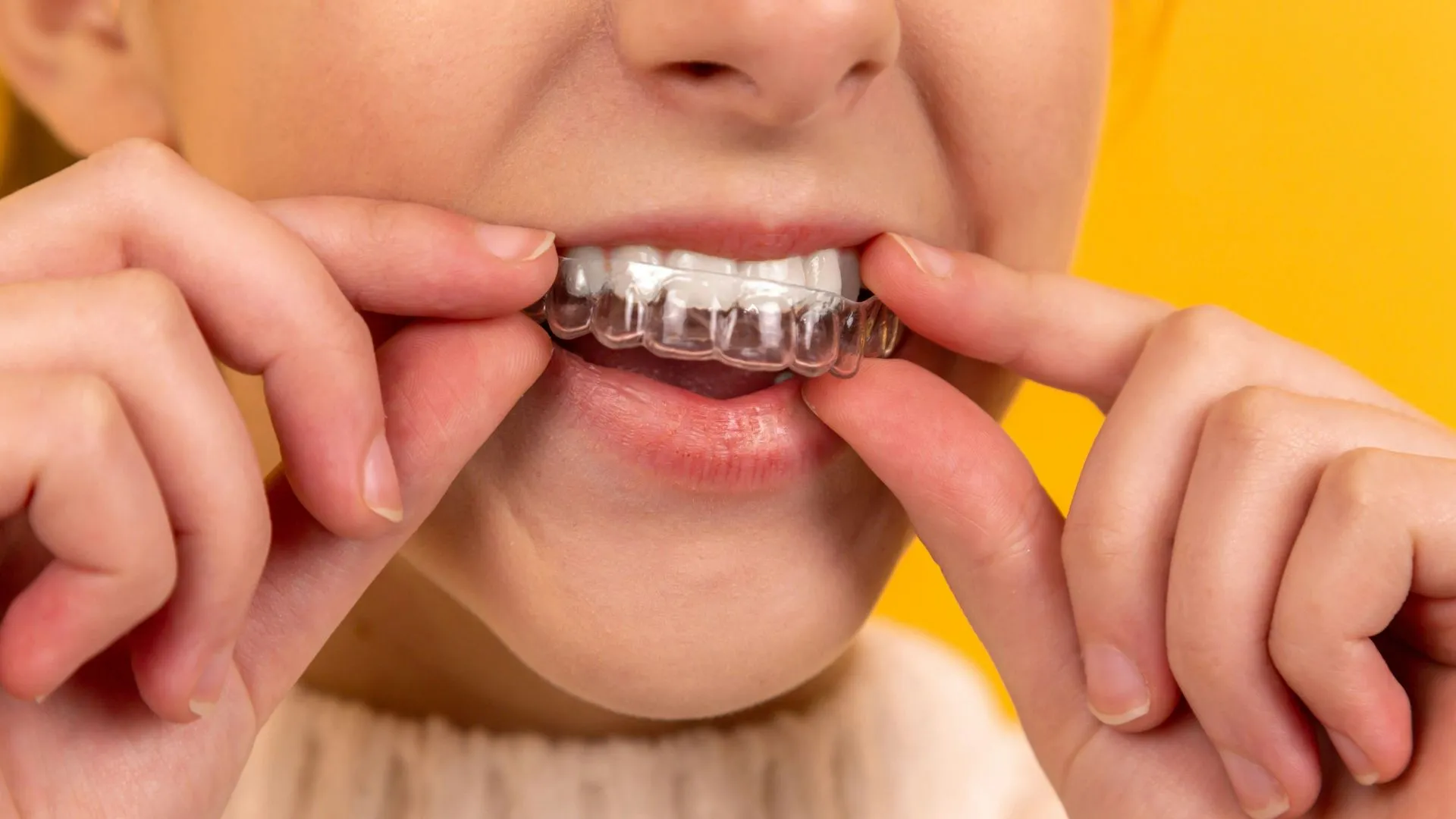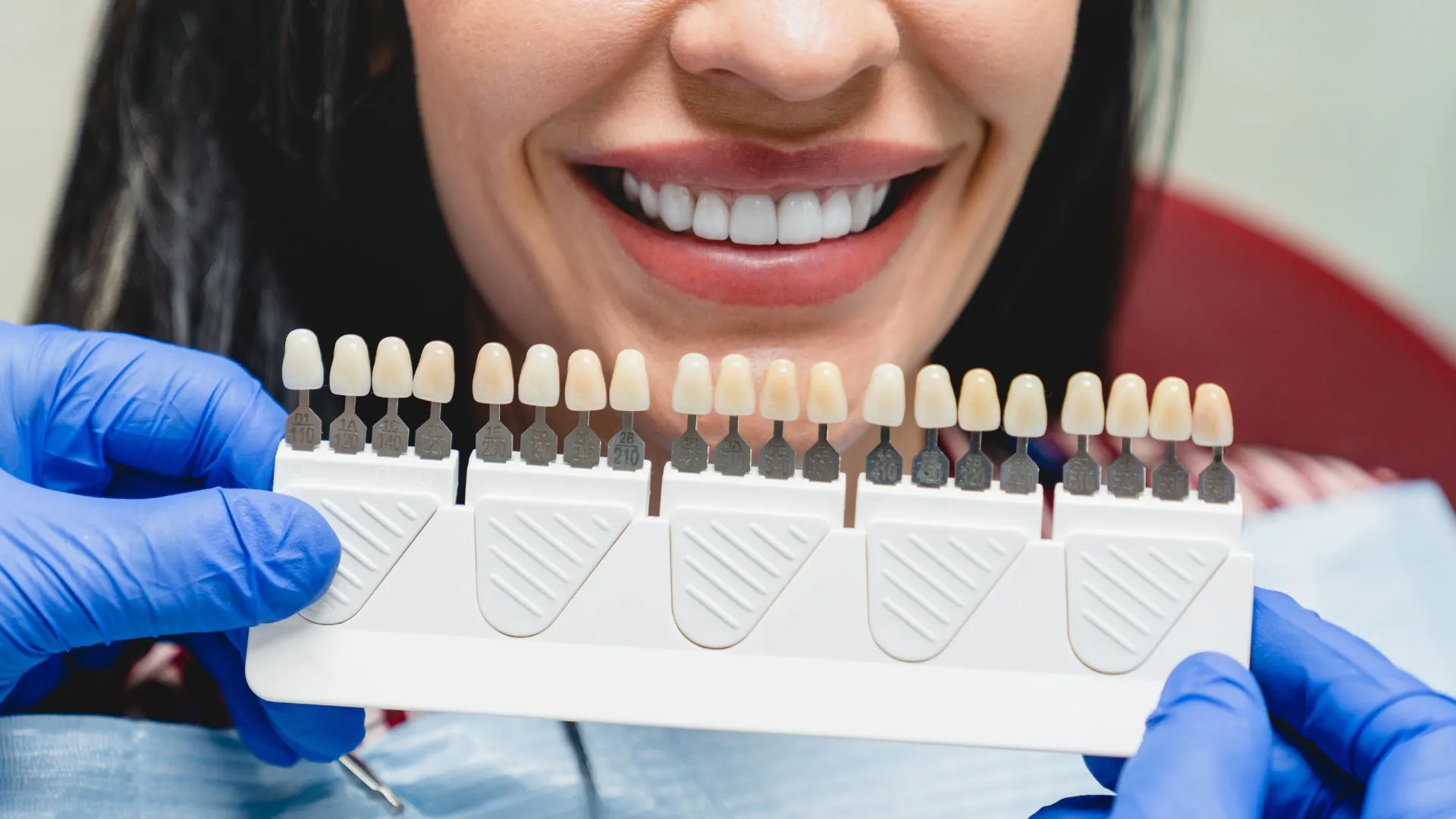The implant procedure has never been easier. A dental implant is a small, metallic screw that is drilled into the jaw bone to serve as a replacement for a natural tooth root. The screws are typically made of titanium or titanium alloys and are…
The implant procedure has never been easier. A dental implant is a small, metallic screw that is drilled into the jaw bone to serve as a replacement for a natural tooth root. The screws are typically made of titanium or titanium alloys and are a durable, long-term treatment option when it comes to tooth replacement.
Once the dental implant successfully fuses to the bone through a process called osseointegration, a prosthesis such as a crown or a denture is attached to the site and can then be maintained and used as a normal tooth.

The many benefits of dental implants
Thinking about the procedure itself can be unnerving for most and downright frightening for some if you have no idea what to expect. But there is no need to fret! The fact of the matter is that dental implants are consistently being recommended more frequently and, as a result, becoming more affordable. That’s because people are beginning to see that they are an “effective, attractive, secure way to fill gaps in your smile—all while preserving your existing teeth.”
Dental implants are great because they:
Prevent the loss of bone – When a tooth is extracted or lost, the bone that surrounded the root and supported the tooth begins to disintegrate away. Dental implants help to combat this by fulfilling the same functions as an actual tooth root, namely by stimulating the bone so that it remains active and does not deteriorate.
The look and feel of natural teeth – A busy lifestyle leaves little time for constant worry. Instead of being plagued by anxiety about how long your bridges or dentures will last this time, you can rest easy knowing your dental implant will maintain your smile for years to come. Since the implant fuses to the jaw bone and literally becomes a part of it in the process, your replacement tooth will be strong and look and feel just like all of your other real teeth.
Preservation of your natural smile – When a tooth in the front of your mouth is lost, the bone tends to degrade rather rapidly. This causes your lips and mouth to sink inward and can contort the structure of your natural face and smile. A dental implant will halt the deterioration of the surrounding bone, therefore protecting the infrastructure of your mouth and preserving your smile.
Preservation of your bite – Missing teeth towards the back of your mouth can lead to the collapse of the back of the mouth. This is followed by a widening out of the front teeth and a gradual slackening of the corners of the mouth as the jaw weakens. This leads to a weak bite and distorted facial features and is known as bite collapse. Dental implants reinforce the bone and prevent the issues with bite collapse described above.
Neighboring teeth are protected – When one of your teeth is lost or removed, bone resorption is not the only issue to worry about. Neighboring teeth also begin to move into the now-empty space, which can have a lasting detrimental impact on gum health as well as the stability and function of your teeth. When dental implants are used to treat missing teeth, they do not require surrounding teeth to be shaved down or have partial dentures hooked onto them. Your dental implants will serve as a whole replacement for your original tooth root and therefore not require your dentist or oral surgeon to alter adjacent teeth.
A more permanent solution – Dental implants are currently heralded as the most long-lasting solution to tooth loss. They are designed to withstand all the normal wear and tear of your natural teeth and to last a lifetime. Studies have shown that dental implants have a 95% success rate over time spans of 40 years or more. Of course, this varies based on factors such as general patient health and how well you care for your teeth, but these statistics are still much more promising than those for bridges or dentures, which we’ll get to in just a minute.
Your wallet will thank you – Since treatment with dental implants has proven to be a more successful long-term solution as opposed to other traditional methods, that means less time and, most importantly, money spent at the dentist’s office! Bridges have to be replaced periodically as they wear down over the years, and each visit could run you somewhere between $3000 and $4000. However, with a dental implant, you are looking at a one-time payment of around $4000-$6000, which will end up saving you thousands over the course of your life!
Outstanding patient reviews – Quotes such as this one: “I had a removable partial for years. I got used to eating certain foods and not being able to eat other foods. After I replaced my missing back teeth with implants, I can chew anything! If only I’d have known how much better they’d be- I’d have them put in years ago. It’s like I’ve gone back in time. It’s absolutely worth it. And it didn’t hurt! ~ K.B.” can be found on just about every dental implant review site. Look them up and see for yourself why others choose dental implants over other treatment options.

Why not bridges or dentures?
Bridges and dentures may be much cheaper in the short-term, but that means the burden of long-term costs is shifted onto you and your dental health later on down the road. There is a handful of concrete, health-conscious reasons why dentists and oral surgeons are starting to recommend bridges and dentures less and less:
They hurt other nearby teeth – When a bridge or denture is placed in your mouth, neighboring teeth must be shaved down or cut in order to accommodate the new attachment. This leaves enamel exposed, which weakens your teeth and makes them much more sensitive over time. Not to mention, every time you go to get your dentures or bridges replaced the process must happen again, resulting in the chipping away and softening of the surrounding teeth over time.
Looks unnatural – When a tooth is replaced with a bridge, the gum and bone underneath the insertion still actively deteriorate. This causes a bridge to appear as though it is being pushed out and being separated from your gum line over time. Dental implants serve as a new, artificial tooth root that prevents the loss of bone and thus appear much more attractive as time wears on.
Hard to manage – Dentures and bridges require at least a few extra minutes in maintenance a day. Dentures must be soaked while not being worn to avoid potential contorting of the material, and bridges leave little nooks and crannies for food particles to get stuck in and bacteria to grow on, which can be very bad for your overall oral health and lead to issues such as gingivitis and tooth decay.
Not as durable – “Traditional, tooth-supported dental bridges only last five to seven years, and with proper care often more than 10 years, but at some point, they may need to be replaced“. Bridges and dentures last only a fraction of the amount of time dental implants do. While they are the cheaper option up front, the overall costs when you account for a lifetime of maintenance mean these options are not as cost-effective or practical for the long-term.
Sky Orthodontics OKC has said, “Bridges and dentures work well for some patients for certain circumstances. Dental Implants are the long-term, more cost-effective approach to missing teeth.”
Ok, I want to connect with a dental implant office. Where do I begin?
You will want to start by finding a reputable dentist or oral surgeon who offers the services that you need for a price that is affordable for you. Finding a surgical specialist who has experience in placing dental implants is highly recommended seeing as how this can greatly increase the chances of your dental implants successfully lasting a lifetime.
It is suggested that you personally look into the specialist’s credentials and read reviews of their work online if possible to determine whether you believe they’re qualified to perform this procedure on you. You can search for such information in this directory of dental implant experts provided by the American Academy of Implant Dentistry. As the AAID says, “Dental implants may be the best option to replace a missing tooth, but remember that there is a difference between ‘dentists who do implants’ and ‘dental implant experts.’”
Introductory examination
First, your oral surgeon or dentist must ensure that your jaw bone is strong enough to withstand the placement of the implant. This is largely determined via x-rays, impressions of your teeth, and possibly a CT scan or two. The dentist will examine the problem area, discuss possible treatment options with you, and will tell you how to go about setting up an appointment with your specialist and preparing for the surgery so you get the best results.
Specialist referral
If your jaw bone is weak, your specialist may decide that a bone graft would fix the issue so you may become a successful candidate for the procedure. A bone graft involves transplanting tissue from one bone to another to help compensate for the damaged or lost bone. If the graft needs to be done, then the dental implant will be inserted only after it has fully healed.
The surgeon will look at your x-rays and teeth models and make an informed decision on precisely where to place your implant based on your occlusion, or bite, and how your other teeth currently fit into the surrounding area, as well as the quality and quantity of bone that the dental implant will be drilled into.
Preparing for the dental implant procedure
There are many things that you may or may not have to do to prepare for your implant procedure depending on whether or not your specialist believes it will enhance the success of the surgery, like:
- Using an antibacterial mouthwash with the active ingredient chlorhexidine in it.
- Prescribing you antibiotics to take prior to the procedure as a precaution if you are prone to infection.
- Stop smoking, as smoking can impede the osseointegration process and cause your implants to fail.
- Eat a full, healthy breakfast unless your choice of anesthesia requires that you do not eat for some time prior.
I am afraid of the dentist. Will it hurt?
Avoiding dental procedures because of the fear of pain is very common and normal, but it can also cause what would otherwise be small problems to fester into a literal headache when infection sets in.
Basically, the longer you wait, the more likely you are to experience lasting pain in your day-to-day life as a result of these untreated dental problems. Nevertheless, you will be quite relieved to know that you will feel no pain while getting your dental implants! How you ask? Well, there are a couple of different options here as well:
Local anesthesia – Can be administered by anyone offering the treatment. Is administered to the implant site and the surrounding area by a series of shots that numb space where the specialist will be working. You will be awake and fully functional while under local anesthesia, but still unable to feel anything, save for some vibrations and bumps here and there. While possibly uncomfortable, you should feel no pain.
Anti-anxiety medication – This can be given orally or intravenously (meaning it will be injected into your veins), but only by a licensed oral surgeon. Meaning if you are having severe apprehension about your procedure and cannot physically bring yourself to complete the surgery under local anesthesia, you will need to find a reputable specialist who administers this type of medication to patients. This could potentially incur more costs for you.
How long will the implant procedure take?
This depends on the number of teeth being replaced, their location if a tooth needs to be removed first, and your general health, among other things. Typically, though, a simple one-tooth implant will take about one hour to insert into your jaw. Once the implant itself is drilled into your jaw bone, it is left to completely heal for a few months prior to re-opening the site and attaching the dental prosthesis.

Tooth extraction
If a rotten or dead tooth needs to be extracted prior to inserting the implants, then this must be done first in a separate procedure. Much like with dental implants, you will be offered local anesthesia, although stronger analgesics may be used if you so desire and can find someone licensed to administer such anesthetics to you.
Especially when the front teeth are concerned, the specialist must be extremely precise when removing the tooth, so the surrounding bone and gum tissue are not damaged. If this is not done properly, the final implant may appear crooked or otherwise unappealing. It may also contribute to the possibility of your implants being rejected by your body.
This again highlights how important it is for you to do your own research on your specialist’s qualifications and experience prior to allowing them to give you dental implants. Extraction is often followed by a minor bone graft. This is done to safeguard the tooth socket and to maintain its shape and the encompassing gum tissue for the new dental implant.
The surgery
The procedure itself is fairly laid back and minimal. Being familiar with these steps can help you feel relaxed, prepared, and comfortable on the day of your procedure.
Anesthesia – Of course your dentist or oral surgeon will begin by making sure you are nice and numb and cannot feel any pain. You will remain awake, but aside from some slight pressure or feelings of discomfort, you will not feel anything. If this is too nerve-wracking for you still, you may opt for a more heavily sedated approach. This can either completely knock you out, or leave you awake but “out of it” and generally unaware. Your specialist will test the implant site prior to beginning any work to make sure the anesthesia has “kicked in” all the way and you will not feel any pain.
Preparing the implant site – Once you are nice and numb, your professional will make an incision in your gums above where the implant is to be inserted. Your dentist or oral surgeon will then begin creating the osteotomy, or small hole in the bone. This is done using a series of increasingly large, specialized drill bits which your dentist uses until the hole is the right diameter.
The specialist performing the procedure will periodically flush the area out with water to ensure cleanliness and prevent tissue damage that may occur with overheating. Once the hole has been created, the professional inserting your implants will use an alignment pin to ensure proper placement of the dental implant.
Once the pilot hole has been shaped and approved by your dentist, the implant site will be stitched up. Usually, self-absorbing stitches are used to eliminate the need to maintain or worry about them, but occasionally dentists and oral surgeons may choose to use traditional stitches. If this is the case, you will have to make an additional appointment to have them removed approximately two to three weeks later. You now get to go home and heal for a few weeks until the site is ready for your prosthesis to be placed!
Receiving your replacement tooth – Once the implant site is healed, your dentist will once again examine its progress to guarantee it is fully healed and ideally situated for an aesthetically appealing replacement. Upon confirming this, the process of inserting your implant can begin!
This is, again, a rather uneventful operation. First, the gums are opened once again to expose the implant site. The tooth is screwed onto the dental implant either by hand or by using a different bit for the same specialized drill used to create the pilot hole during the first part of your procedure. This replacement tooth will be a crown that is molded based on impressions taken of your teeth in your initial consultation.
Once the replacement is in, your dentist or oral surgeon will ask you to bite down and make sure the tooth “feels” right before sending you on your way.
The healing process and aftercare
As with any major surgery or cosmetic procedure, how you care for your dental implant during the healing process can be a decisive factor in whether or not the procedure proves successful. There are a few simple things you should do and be aware of while your implant is on the mend to make sure your implant remains infection-free, permanent, and will cause you the least amount of pain as possible.
Maintain a healthy diet – Your oral health care professional may recommend a special diet for you based on specific circumstances, but generally, as long as you stick to soft, healthy foods that are low in sugar your implants will be in good shape! It is also important to remain hydrated, as this will help your body maintain itself and keep the pace of healing at a respectable rate.
Keep the area exceptionally clean – Brush twice a day and floss at least once as you would your other, natural teeth. If food becomes stuck in or around the area, you may find that flushing with a saline solution or mouthwash recommended by your dental hygienist can help keep the site free of hard-to-reach food debris.
Keep Up with Your Dental Checkups – Make sure to continue receiving regular dental checkups every six months as you typically would.
Pain management – For most patients, dental implants cause persistent, dull pain for a maximum of one week. This can be managed by over-the-counter solutions such as ibuprofen or aspirin, and will not inhibit you from going to work or carrying out your other daily duties.
As you can see, dental implants are a cost-effective, durable treatment option for missing teeth that will restore your confidence in your smile as well as the effectiveness of your bite. It is a relatively simple procedure with a straightforward aftercare system that you will find easy to manage and well worth your investment.




